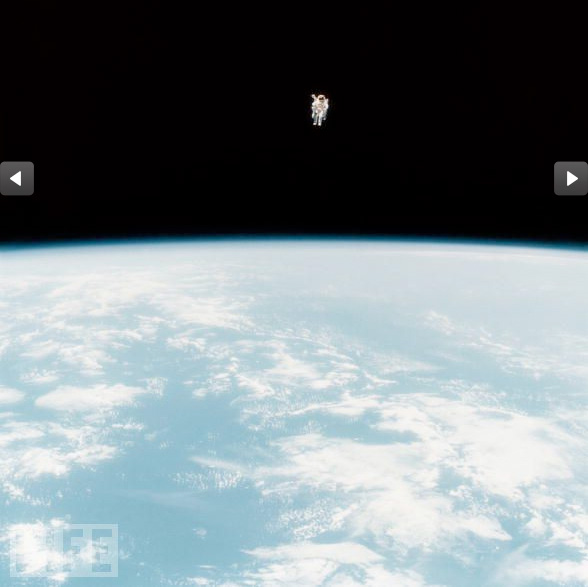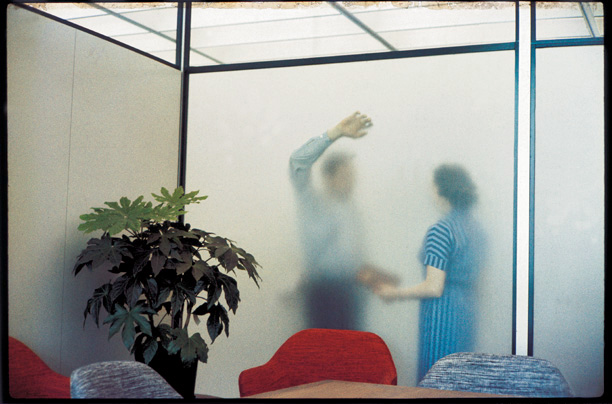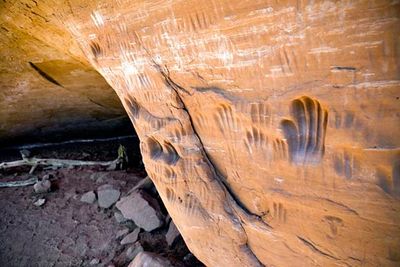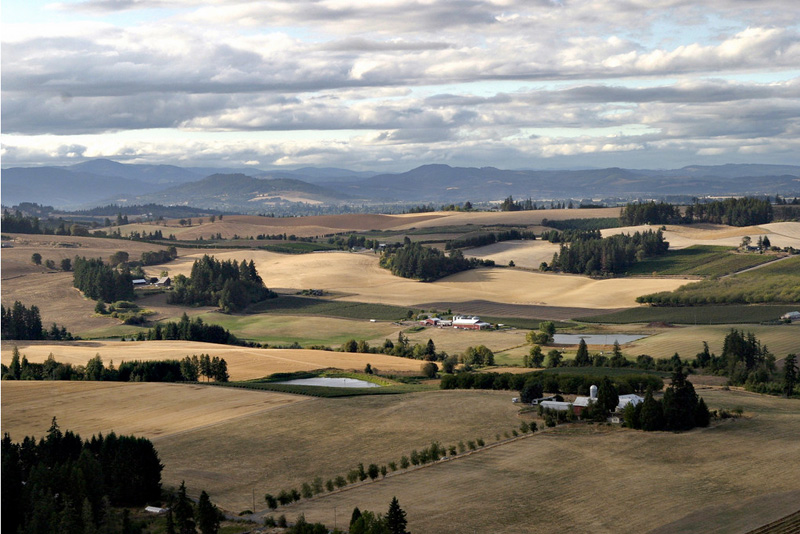Revisiting a couple of topics from the last couple of months:
First, a wonderful collection of Kodachrome photographs from the vaults of Fortune magazine, dating from 1939 to 2002, from artists as diverse as Dmitri Kessel, William Vandivert*, Dan Weiner, Robert Doisneau, and Alex Webb, as well as several not at all known for shooting color, such as Ansel Adams, Ralph Steiner, Walker Evans, and W. Eugene Smith (Smith's picture above was taken in 1957 for an article about the Connecticut General Life Insurance Company's then-new building in Hartford. The picture didn't make the issue). A tiny sampling online, but good to look at. (Coincidentally highlights one of Kodachrome's often hidden benefits, too—its good dark-storage archivability.)
We were talking about Kodachrome when it went the way of all things last month.
On a related note, TOP reader Luc Novovitch passed by Kodachrome Basin State Park in Utah last week on his way to Escalante, and he confirms that the park is still there and still has the same name! (There was some question.) Above is a shot he took on his way through.
In a "Featured Comment" to our post about adding an aerial shot to your portfolio, photographer Stan Semuskie told a cool story about being hired by Forbes magazine to shoot the home of Nike founder Phil Knight, and how he had a blast that day shooting everything he could see from the chopper. Stan has now put some of the selects from that shoot online; you can practically feel the rush of the air and the beat of the blades. Fun stuff.
 On the often visually irritating Life.com site, Astronaut Bruce McCandless is
On the often visually irritating Life.com site, Astronaut Bruce McCandless is
joined in space by a watermark and two enormous floating arrows.
Life.com has put up a set it calls "The 21 Greatest Space Photos Ever." I have to say I think the jury's still out on Life.com. The JPEGs are often of...well, variable quality, and the interface gets in the way of enjoying the pictures. Take #15 in the linked set, for instance—"the immediately recognizable human form" in the "vastness of space" yes, but then, the two arrows that also appear to be floating in the vastness of space compete with the human form and detract somewhat from the visual impact. (Speaking of that shot, I wonder if Astronaut Bruce McCandless is any relation to Chris McCandless, the protagonist of Jon Krakauer's fine if troubling book Into the Wild—there's a movie
, too—I recall that when my father was a Director of NASA, one of the people under him was Walt McCandless, father of Chris.)
Finally, the always delightful Shorpy.com has some better JPEGs of the late Julius Shulman's architectural work than I was able to link to the other day, including a large, good-quality digitization of Shulman's signature picture.
Mike
(Thanks to Marc Rochkind, Luc, Stan, Robert Lee, and Werner J. Karl)
*Whose former assistant Carl Leonardi is a TOP reader.






"...when my father was a Director of NASA"!! You've never dropped THAT little hint before, Mike! As a kid, did you get to do any cool stuff, like ride in the C-130 "vomit comet", or meet any astronauts? Or did you just never get to see your Dad?
Regarding Astronaut Bruce McCandless, shown in that 1984 photograph above: We've all heard his voice - he was CapCom during the Apollo 11 moon walk. See: http://history.nasa.gov/alsj/a11/a11.html
Posted by: Rod S. | Friday, 24 July 2009 at 09:14 PM
Rod,
Actually I think I have mentioned my father's NASA connection before, but we're coming up on 35,000 comments on the blog so I won't blame you if you don't have every single one memorized [s]. He was Director for Space Applications under Jerry Ford. As I recall there was an overall head of the agency, who was called the Administrator, and six Directors underneath him. The Administrator's name in that era was Jim Fletcher, and he was a cabinet-level appointee. My father's position was a presidential appointment, but one tier below cabinet level. He did survive into the Carter Administration, but not very far.
Aside from having astronauts to the house for dinner now and then and getting some cool insider tours of NASA facilities (I was especially interested in LANDSAT imaging and satellite lenses), about the only thing I remember is that my father had a pass that allowed us to skip the lines at the Air & Space Museum, which was new at the time and the hottest ticket on the National Mall. I think I saw the first Air & Space IMAX films a dozen times, with VIP treatment all the way. [g]
All a long time ago now.
Mike
Posted by: Mike Johnston | Saturday, 25 July 2009 at 01:06 AM
You're absolutely right about Shulman and Shorpy. For me the real treat is the color version of his most famous photo--Case Study House No. 22 (the Stahl house, by Pierre Koenig).
The B&W version we're used to seeing:
http://www.shorpy.com/node/5073
Glorious early '60s color:
http://www.shorpy.com/node/6514
Posted by: John Edwin Mason | Saturday, 25 July 2009 at 02:26 AM
The two color images by Walker Evans are wonderful, as is the one you show by Eugene Smith. One only wishes that they did more in color . . . .
Posted by: Yuanchung Lee | Saturday, 25 July 2009 at 08:30 AM
All the bits and bobs that are on web pages and that now float in to the images being displayed such as arrows, navigation menus and watermarks are no where near as bad as having a large photo placed across 2 pages in a magazine like National Geographic. This has always irritated me beyond belief as you have to destroy the magazine to get a true sense of the composition of the photo. This is a huge benefit to viewing images on the web and I will never understand why magazines especially NG would do that to there photos other then they only ever look at the layout and never the actual magazine.
Posted by: Richard | Saturday, 25 July 2009 at 12:40 PM
Richard, one reason I use "Zinio Reader" no gutter on a full page spread. On the 30" monitor the images are beautiful 90% of the time--some great foreign magazines on there dealing with photography. It's nice to look at a 16X20 image. "Zinio" is a great way to go for Photo and Picture magazines.
http://www.zinio.com/
No National Geographic yet.
Posted by: Carl Leonardi | Saturday, 25 July 2009 at 03:53 PM